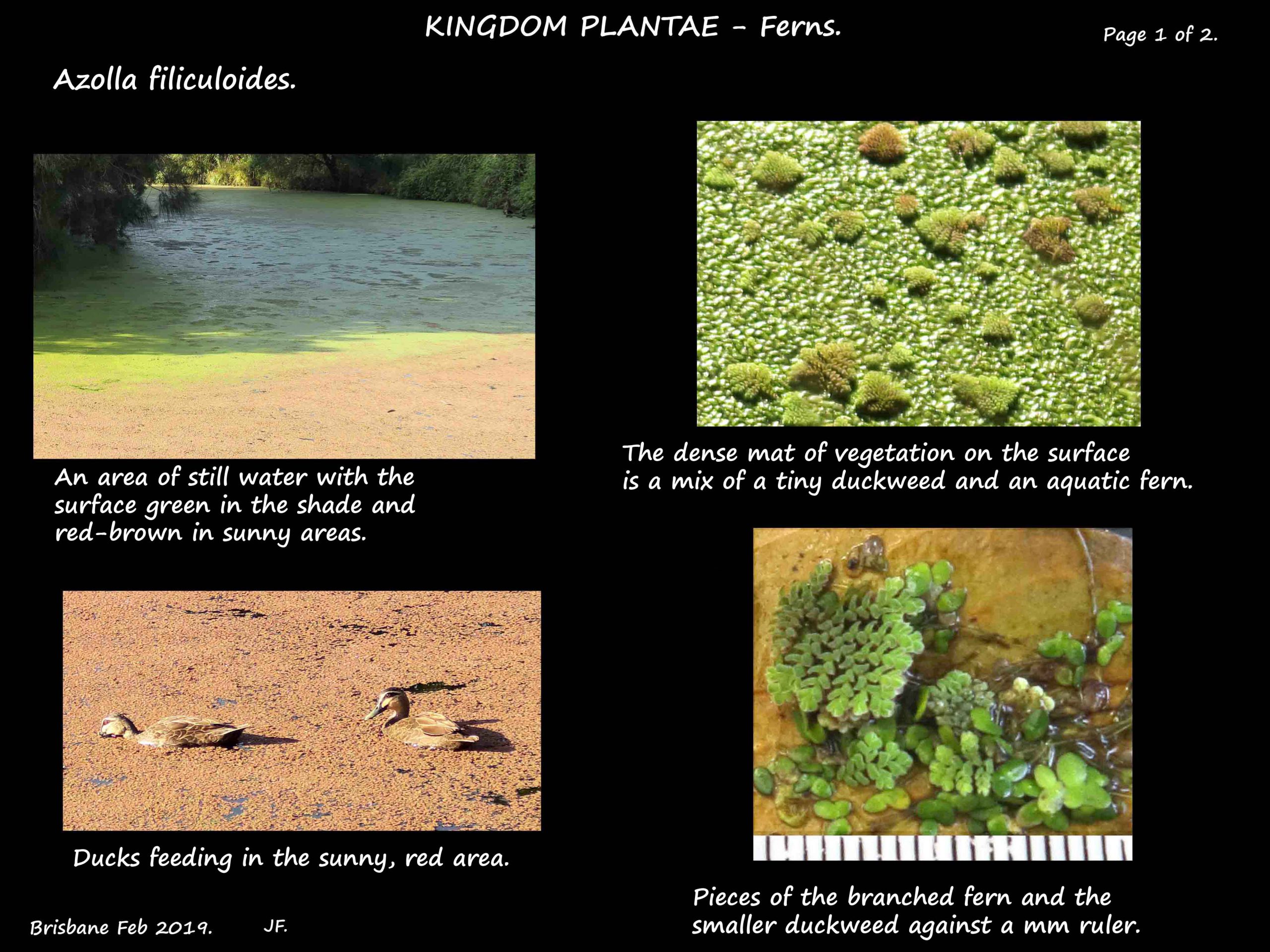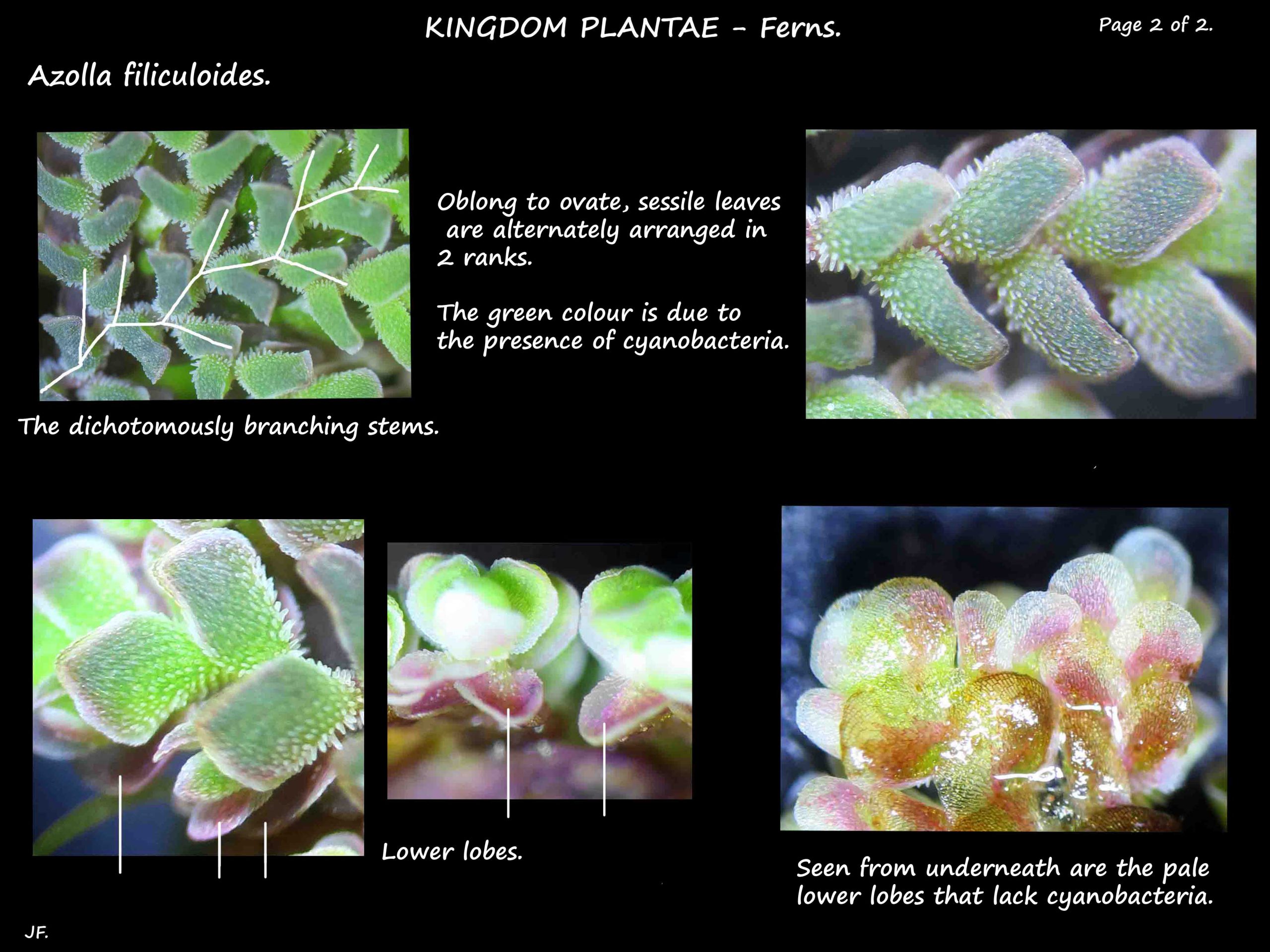Azolla filiculoides.
Family Salviniaceae has 2 genera, Azolla and Salvinia with about 16 species between them.
They are aquatic ferns that resemble duckweed more than other ferns.
They differ from all other ferns by producing 2 types of spores:
- megaspores produced in megasporangia develop into female gametophytes and
- microspores produced in microsporangia develop into male gametophytes.
Azolla filiculoides is known as the Water fern, Red azolla, Mosquito fern or Red Water Fern.
It is a floating aquatic fern found in Queensland that rapidly forms large mats on still water.
Plants are irrregular, circular or fan-shaped and up to 2 – 3 cm wide.
There are 1 to 3 roots per node (A. nilotica has 5 or more).
The stems are dichotomously branched (fork repeatedly into 2 roughly equal branches).
The simple, often overlapping leaves, without stalks, are arranged in 2 ranks.
They are round or oblong and have 2 lobes.
The upper lobe is green due to the presence of cyanobacteria containing chlorophyll and the
lower lobe, mostly underwater and without cyanobacteria, is pale.
There are unicellular, water repellant hairs on the upper surface.
(In the similar Azolla cristata the hairs have 2 cells.)
The bright green foliage changes colour depending on the amount of light and shade and also the
temperature becoming red or brown. (A. pinnata never becomes reddish.)
Asexual reproduction is by pieces of the plant breaking off.
Sexual reproduction is by spores formed in spherical sporocarps on the undersides of the branches.
The green or red, 2 mm male sporocarps have numerous microsporangia inside.
Each smaller female megasporangium produces one megaspore.
The male and female spores form gametophytes – the male with antheridia producing sperm cells
and the female ones with archegonia producing ova.
J.F.



